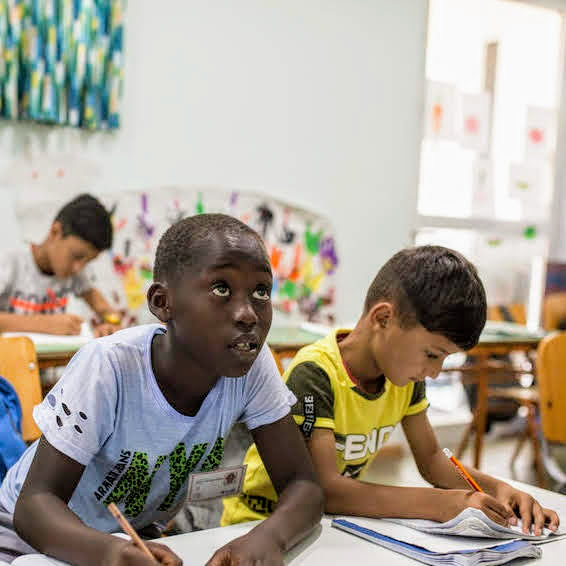Annual Survey of Refugees, 2019
United States of America, 2020
Get MicrodataIdentification
ORR_USA_2019_ASR_vEXT
Annual Survey of Refugees, 2019
| Name | Country code |
|---|---|
| United States of America | USA |
Socio-Economic [hh/ses]
Since the 1980s, the Office of Refugee Resettlement (ORR) has conducted the Annual Survey of Refugees (ASR), which collects information on refugees during their first five years after arrival in the U.S. The ASR is the only scientifically-collected source of national data on refugees’ progress toward self-sufficiency and integration. ORR uses the ASR results alongside other information sources to fulfill its Congressionally-mandated reporting following the Refugee Act of 1980. Historically, the microdata from these surveys have generally been unavailable to researchers.
In the spring of 2020, ORR completed its 53rd Annual Survey of Refugees (ASR). The data from the ASR offer a window into respondents’ first five years in the United States and show the progress that refugee families made towards learning English, participating in the workforce, and establishing permanent residence.
Sample survey data [ssd]
Households and individuals
Version
- v2.1: Edited, anonymous dataset for licensed distribution.
Scope
Demographics; household composition; English training; livelihoods; education; residency status; medical care sources; social assistance; housing.
| Topic |
|---|
| Education |
| Livelihood & Social cohesion |
| Health Care |
| Domestic Needs/Household Support |
| Income Generation |
| Land and Property |
Coverage
National coverage
Refugees aged 16 years old or over at the time of interview who arrived in the U.S. during FY 2014-2018
Producers and sponsors
| Name |
|---|
| Office of Refugee Resettlement |
| Urban Institute (Contractor) |
| Name |
|---|
| Office of Refugee Resettlement / U.S. Department of Health and Human Services |
Sampling
The 2019 ASR design is similar to the 2018, 2017 and 2016 ASR designs2, which used a full cross-sectional national sample of refugees entering within the past five years. The population of interest – the study population – for the 2019 ASR is defined as refugees entering the U.S. between FY 2014 and FY 2018, inclusive, who are at ages 16 and over at the time of the 2019 ASR interview. Because the interviews were conducted in early 2020, the population includes a small number of refugee respondents younger than 16 at the time of arrival to the U.S.
The 2019 ASR targeted 1,500 completed interviews from refugee households entering the U.S. between FY 2014-2018. The sample was designed to allow for separate estimates and analyses from each of the three designated cohorts. Moreover, the design needed to accommodate both household- and person-level analyses. The sample was drawn as fresh cross sections by cohort; there was no longitudinal component. The survey objectives required that – in addition to primary stratification by cohort – the sample of households (i.e., PAs) be stratified at least by year of entry and geographic region of origin.
The 2019 ASR employed a stratified probability sample design of refugees. The first stage of selection was the household (PA) and the second stage was the selection of persons within households. Within each of the three cohort strata, the following factors were used for stratification:
cohort, year of arrival (for cohorts 1 and 2 only); geographic region, native language, age group, gender, and family size at arrival (1, 2, 3+ persons). Proportionate stratified samples were drawn independently within cohort.
A replicated sample design was used for the 2019 ASR. A larger sample of 10,800 was drawn and randomly split into equal sized replicates to produce 30 independent sample replicates per cohort. Under this strategy, 20 replicates comprised the 7,200 that were expected to be needed based on the assumptions of tracing and nonparticipation used above. Upon commencement of field operations, 10 of the 30 replicates for each cohort were released into the field and the results monitored by cohort, thus releasing about 3,600 sampled PAs
The response rate was driven by the ability to locate and speak to (1,506 + 529) / 8,024 =
26 percent of the sample. Among the (1,506 + 529) = 2,035 refugees who were
successfully contacted, 1,506/2,035 = 74 percent agreed to participate in the survey and
completed it (“Completed Interview”).
Household- and person-level analytic weights were developed for the 2016 ASR to allow for valid statistical estimates of the target refugee population. Both sets of weights are comprised of two components – a base weight reflecting the selection probability and an adjustment that corrects for differential nonresponse and aligns the population to known totals from the sampling frame (RADS universe file).
The household analytic weight was formed by taking the product of the base weight and post-stratification adjustment. The post-stratification adjustment was created by applying an iterative proportional fitting algorithm called “raking” to the ASR household-level respondent data that simultaneously align the sample to the refugee population distributions for several factors from the RADS data.
Data collection
| Start | End |
|---|---|
| 2020-01-13 | 2020-04-21 |
| Name |
|---|
| Urban Institute (contracted by ORR) |
For the ASR 2019, revisions to the 2018 survey instruments and materials were made on
the English version and then translated into 19 non-English languages. Additionally, the
survey retained an interpreter to conduct interviews in a 21st language, Chaldean.
Data Access
Urban Institute. 2019 Annual Survey of Refugees. Ann Arbor, MI: Inter-university Consortium for Political and Social Research [distributor], 2020-02-19. https://doi.org/10.3886/E104642V4
Metadata production
UNHCR_ORR_USA_2019_ASR_DDI_v1.0
| Name |
|---|
| UNHCR |
2022-04
Metadata version
1.0
